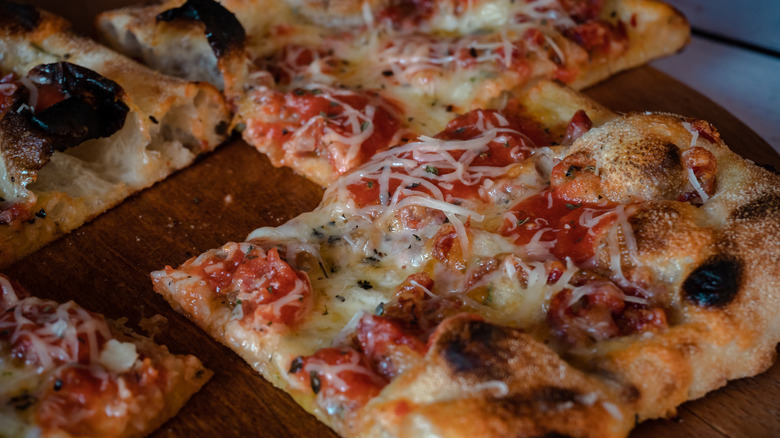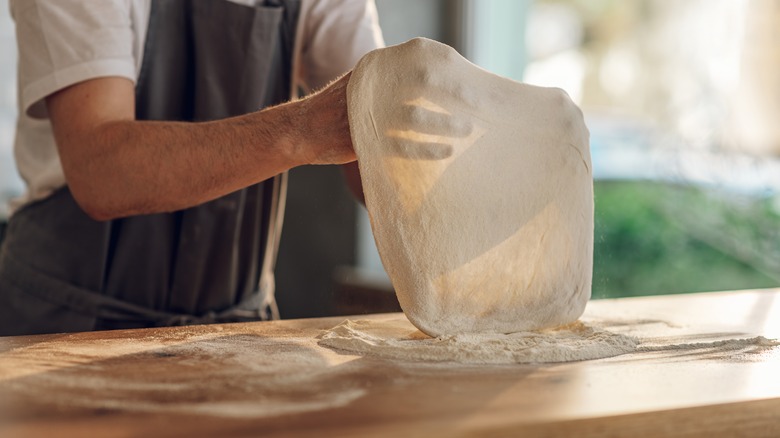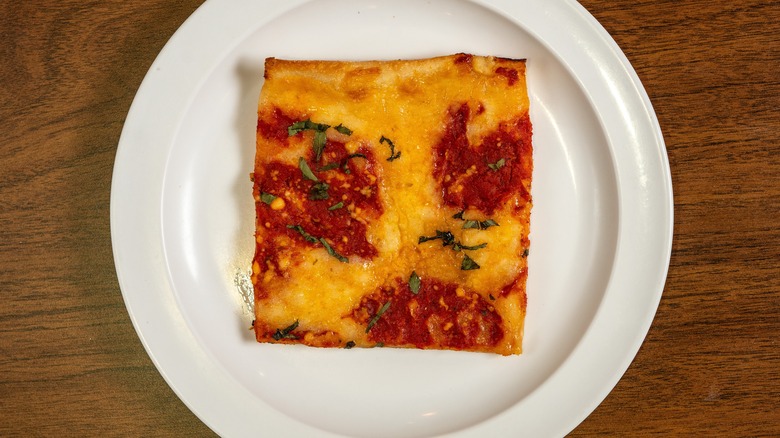Here's What Makes Grandma Pizza Such A Unique Pie
Everybody understands why learning how to cook like a grandma can help you craft delectable dishes, but it's less likely that you're familiar with thin and crispy Grandma pizza. While everyone has their own opinions about which slice of tomato pie is superior and you are undoubtedly aware of numerous pizza styles, you may reconsider which type is your favorite after learning about this specific meal.
The name of this pizza is likely a reference to its origins in the Italian home, where matriarchs traditionally made it. The key distinction between Grandma-style and other pies has to do with how it's made and how long it takes to create. Other styles call for the dough to be spread out on a pan and left to rise before being baked, allowing the crust to get fluffy during its cooking time. However, Grandma's pizza dough is placed in the oven before the dough has been allowed to rise, which results in a dense, more cracker-like crust.
How Grandma pizza dough is made
Grandma pizza is a lesser-known style, but the mainstream version that has a similar preparation process is Sicilian. As its name might suggest, Sicilian pizza originated on the Italian island of Sicily in the 1800s and came to America with Italian immigrants. Both types begin when a dough is stretched out thin across a well-oiled sheet pan. This oil coating on the baking tray causes the bottom of both pizzas to form a crispy brown crust, so the end product almost has a fried feeling.
Though these two styles end up with a comparable crispy bottom, when you put the base aside, Sicilian and Grandma pizza have wildly different crusts. After you've stretched out the dough for a Sicilian pie, you allow it time to rise before covering it with toppings. This results in a crust that is filled with air, which will cause it to swell while it's being baked and take on a chewy consistency. Much like bar-style pizza, Grandma pizza isn't given time to rise before it's baked, so it winds up much thinner and more dense than its Sicilian counterpart.
Grandma pizza's toppings
This tomato pie is also set apart from other slices because of how it incorporates toppings. Though many pizza varieties put down the sauce before the cheese and other accouterments, this style goes in a different direction. A blanket of sliced mozzarella cheese is draped over dough that hasn't risen, then tomato sauce is imperfectly drizzled over the cheese. This way, the patches of mozzarella that remain uncovered with the sauce can begin to brown and bubble.
Being topped in an upside-down fashion isn't the only way Grandma pizza can be differentiated from some styles. The olive oil layer that creates a crispy crust isn't the only oil that makes its way into this pie. It's often topped with an extra portion of garlicky oil and it can be finished with shredded Pecorino Romano and a sprinkling of oregano. The exposed sauce can also be supplemented by the addition of thick-sliced tomato.
If you still aren't sold on trying Grandma style, you might be swayed by Drunken Grandma pizza, where the tomato sauce is swapped out for vodka sauce. Frankly, it's difficult to imagine an iteration of this thin-crust treat that isn't a unique delight for your tastebuds.


